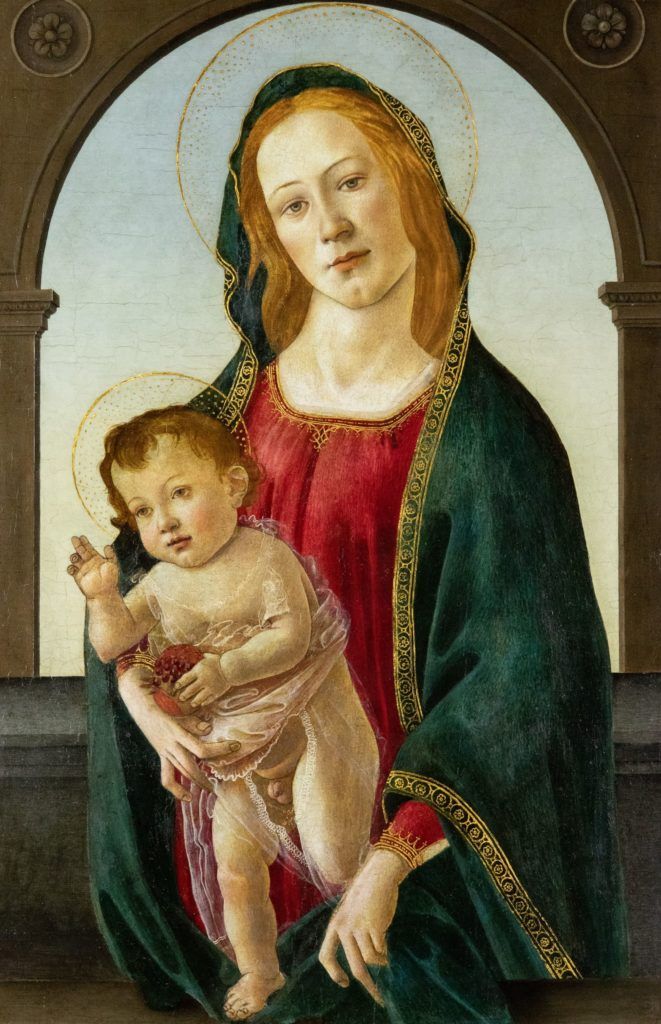An Unidentified Botticelli Painting Spent Decades Hidden in Welsh Museum’s Storeroom
The newly attributed masterpiece was previously believed to be a crude copy of the artist’s work
/https://tf-cmsv2-smithsonianmag-media.s3.amazonaws.com/filer/b9/ca/b9ca3c59-f70c-49ea-a997-6758be397a80/botticelli31500x900.jpg)
Most museums with an original Sandro Botticelli painting in their collection display the Renaissance masterpiece prominently. But Wales’ National Museum Cardiff kept a canvas by the Florentine artist hidden behind closed doors for nearly 70 years, operating under the mistaken assumption that the work was simply a crude copy.
Thanks to a new analysis conducted by experts with the BBC television program “Britain’s Lost Masterpieces,” the centuries-old painting—now identified as a genuine Botticelli—has finally emerged from storage.
Welsh art collector and philanthropist Gwendoline Davies bequeathed Virgin and Child With Pomegranate to the Cardiff museum in 1952. Davies suspected the painting was a genuine Botticelli, or at least produced by the artist’s studio, but after examining the work, art historians deemed it an inferior copy.
Then, Bendor Grosvenor, co-host of “Britain’s Lost Masterpieces,” decided to take a closer look at the canvas.
“Despite all the overpaint, parts of it reminded me of Botticelli’s most famous painting, The Birth of Venus,” the art historian said in a November 13 episode of the show. “I’m now convinced that Botticelli played an important part in its production, and am delighted it has once more gone on public display.”
As Mark Brown reports for the Guardian, cleaning and infrared analysis conducted by art conservator Simon Gillespie offered key insights on the religious scene’s true provenance. Previously unseen underdrawings on the work’s wood panel, for instance, showed the artist changed compositional details including the position of the figures’ hands multiple times. Infrared imaging also revealed a doodle of a man’s head sketched prior to the painting’s completion; the profile was “almost certainly” drafted by Botticelli.
The team’s investigation identified an archway framing the Virgin Mary and infant Jesus as an early 20th-century addition. A forger may have added the detail to hide the fact that the painting was once part of a larger work.

Upon realizing Virgin and Child With Pomegranate was likely a genuine Botticelli, Gillespie says he found the conservation work both thrilling and a bit stressful.
“We had to proceed millimeter by millimeter, given the fragility of the panel and the original paint layers,” he says to the Guardian. “Removing the dirt and old varnish to reveal the true beauty of the Madonna’s features felt like witnessing the rebirth of a masterpiece.”
Botticelli expert Laurence Kanter, chief curator of Yale University Art Gallery, tells Brown he concurs with Grosvenor's attribution: “Clearly this beautiful painting came from Botticelli’s studio. Probably Botticelli himself is responsible for more than a bit of it.”
Kanter adds, “A great deal more study is needed to solve the riddles of ‘how much,’ ‘what parts,’ ‘why,’ ‘when,’ and hopefully the painting can now be studied further by scholars and the public alike.”
So, why did prior art historians mistake the masterpiece for an inferior copy? Grosvenor says the painting was likely never taken seriously because it was housed at a museum in Wales.
“It fell from grace because experts never quite made the effort to go and see it,” he tells artnet News’ Javier Pes .
Virgin and Child With Pomegranate isn’t the only notable work recently uncovered by Grosvenor and his team. Pes reports that the experts also identified a misattributed painting held by the Birmingham Museum and Art Gallery. Credited simply to an “anonymous Flemish artist,” the panel was broken into two pieces and heavily overpainted. But Grosvenor noticed the high quality depictions of a cow and horse seen in the painting, and after removing layers of dirt and varnish, the researchers authenticated the work as a landscape by 17th-century artist Peter Brueghel the Younger.